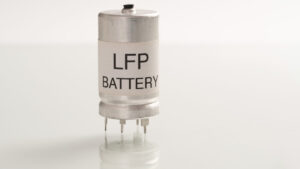- Lithium Power International confirms shareholder support for $365 million sale to Codelco
- Element 25 targets scale to bring costs down to meet cyclical low in manganese pricing
It’s been a rough week for investors in lithium stocks, especially Liontown Resources (ASX:LTR) or people named Gina Rinehart and Tim Goyder.
Prices falling from US$8000 to US$900/t will do that to you, with industry wide cost far higher than they were the last time prices were at these levels. And after fellow battery metals stock Chalice Mining (ASX:CHN) reported it would tighten the belt by 40%, MinRes backed explorer Delta Lithium (ASX:DLI) gave an indication in its quarterly today it was assessing options to reduce cash burn by focusing on exploration at its larger Yinnetharra project over its development ready Mt Ida deposit with current prices providing little support to head to market.
But there is some joy in the market and as with most positivity in the lithium space over the past six months today’s cheer comes from M&A.
While falling spot prices have dulled enthusiasm for the battery juice short term, long term investors remain bullish.
Those include governments, who know all too well that investments energy metals like lithium and copper are an easier sell to their younger constituents than coal and iron ore.
Keen for a piece of the pie is the Chilean Government, which has moved the goalposts to get its misfiring copper company Codelco into the lithium game.
A nationalistic lithium policy proposed last year has done the trick, inking a public-private partnership with international battery metals giant Sociedad Quimica y Minera de Chile, known for its controversial links to anti-communist dictator Augusto Pinochet.
It has also seen Codelco marry its tenements on the Maricunga Salar, the largest undeveloped lithium rich salt lake after the Atacama where brines are evaporated for the battery material by SQM and Albemarle, with those of Aussie lithium stock Lithium Power International (ASX:LPI).
The $365 million, 57c a share bid, may have come in below what some investors really felt LPI’s project was worth. But with lithium in the doldrums, the company’s investors have secured a handy payout after voting up the takeover today at a meeting in Perth.
It came in at a 119% premium to the 26c price LPI commanded before rumours Codelco would make a play emerged.
Chairman David Hannon said the new National Lithium Policy – Chile is the largest producer of lithium carbonate equivalent tonnes in the world after Australia – would have made it difficult for the company to develop the brine on its own.
“The decision of the LPI Directors to unanimously recommend the Scheme follows LPI running a broad strategic process, which included the assessment of potential financing and/or change of control transactions in relation to LPI’s Maricunga
Project, and a comprehensive assessment of the potential benefits and risks of the Scheme,” he said.
“The LPI Directors consider that the opportunity to immediately realise value for cash offered by the Scheme has the potential to deliver greater benefits to LPI Shareholders than any other alternative currently available, including the
standalone financing and development of the Maricunga Project which could be difficult to obtain due to the uncertainty created for project financiers by the National Lithium Policy.”
LPI shares rose slightly to 56c today.
Lithium Power International (ASX:LPI) share price today
E25 eyes cost curve in expansion
Manganese prices have been a tough ride for a while, with the large Chinese owned Woodie Woodie manganese mine in the Pilbara likely to be facing similar margin pressures and lithium and nickel producers.
Also feeling the pinch last year was Element 25 (ASX:E25), owner of the Butcherbird mine in the Pilbara, which said in October it was ‘restructuring’ manganese production to reduce mining and take costs out in the short term.
Prices fell for the 44% benchmark in China from US$6 per dry metric tonne unit to US$4.37 between March and September last year, described by E25 as cyclical lows.
Longer term the company’s aim is to move that concentrate to Louisiana, where it will use a major investment from car giant Stellantis to take the concentrate it sells to steelmakers and instead process it into high purity manganese sulphate.
That’s a key ingredient in both NCM and LMFP cathode lithium ion batteries used in EVs.
But improving the economics at the mine gate will still be important. By ramping up production rates to 1.1Mtpa, E25 reckons it can get towards the bottom of the cost curve at the mine, where life of mine planning extends out to 2031.
It estimates that for $49.8m the project would take 11 months to complete and pay back in 14, operating at costs of US$2.76 ($4.02)/dmtu.
The company says at that level the project, which has an NPV of $228.2m ($150.6m after tax) and IRR of 113%, would break even at prices of US$4.38/dmtu 44% Mn CIF China. By way of comparison, the owner of the Tshipi mine, Jupiter Mines (ASX:JMS), reports costs of US$1.95/dmtu at port in South Africa.
South32 (ASX:S32) runs at similar costs to what E25 is targeting in South Africa, while its GEMCO operations in the NT operated at US$1.88/dmtu in the 2023 financial year and US$2.15/dmtu this year, though they are among the largest and highest grade operations in the industry.
Meanwhile, a surprise bump in iron ore prices and bounce for battery metals producers MinRes, South32 and IGO sent the ASX materials sector up 0.64% today.
Element 25 (ASX:E25) share price today
You might be interested in












